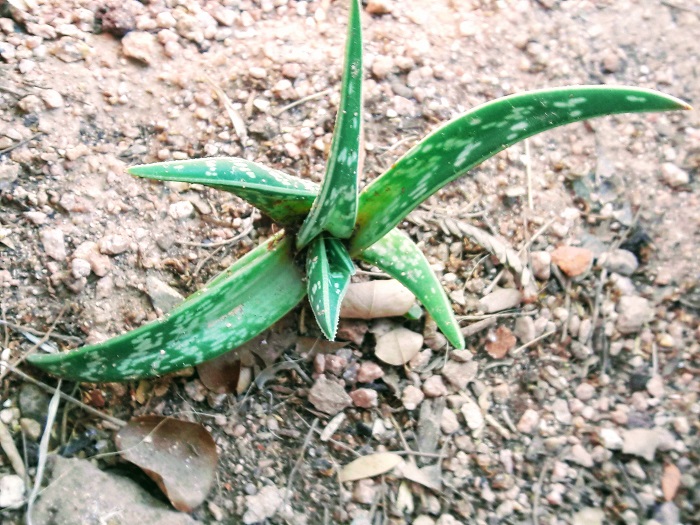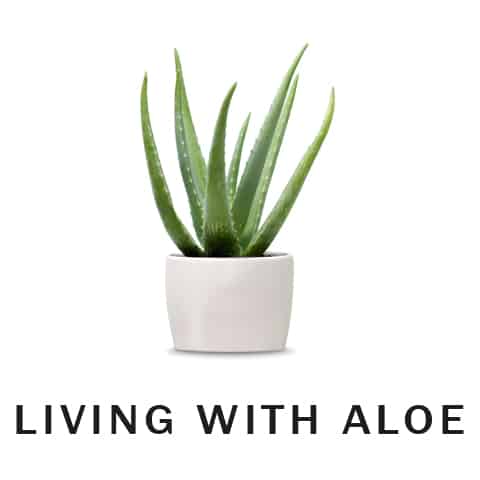
While you can find several hundred strains of the aloe plant, gardeners and alternative health practitioners recognize the benefits associated with aloe vera. The gel within the plant’s leaves can be used to revitalize a person’s health and treat minor cuts, burns, and skin irritations.
To learn more about the benefits of the aloe vera plant, you need to understand more about succulents. Aloe vera, which is a succulent, primarily grows in desert climates. You often find the plant growing next to another desert succulent, the cactus.
Gardens, over thousands of years, have displayed Aloe barbadensis, or the aloe vera plant, a widely used medicinal. If you would like to grow this plant, you will find that doing so is easy. You just have to follow the steps recommended by the gardening pros.
When you hear the word succulent while eating, you may think of a food that is enticingly tender and juicy. You might think of a succulent plant in the same way. The juice contained in the aloe vera triggers this visual. A succulent plant, such as aloe vera, can tolerate a prolonged drought and grows best in bright sunlight. Just make sure you don’t place the plant in the direct path of the sun. In the home, place the plant at a south or west-facing window.
1. Start with Container Gardening
Succulents in desert climates can live for years with an occasional watering and the rays of the sun to support growth. While aloe vera is basically an easy-care plant, it may need to be treated if sap-sucking insects infest it. That means beginning gardeners should start their aloe vera in pots, or practice container gardening. Doing so will help prevent the problems that you may experience outside when you are a beginner.
Because aloe vera is known for the pulp inside its leaves, it attracts certain unwanted insects. During the summer, people who have aloe vera houseplants may take them out to their patio. However, moving the plants outside can pose a problem, if done without forethought. You may be exposing your plants to mites and aphids. These tiny yet destructive insects like to suck the sap out of the leaves, and can cause permanent and irreversible damage.
2. Separate Insect-damaged Plants from Healthy Plants
You can see aphids or mites by using a magnifying glass. Once the leaves have been attacked or the plants display extensive scarring, you can’t do anything about the issue. You can only separate the healthy plants from the damaged plants.
Eriophyid mites attack aloe plants – insects that are closely related to the spider. While these creatures cannot be seen by the naked eye, they certainly can do some damage. The chemicals they inject into the plant leads to abnormal growth patterns. Any damage they cause cannot be reversed. If you use a miticide, the plant may survive. Otherwise, you can only remove any infected plants.
Gently wash salvageable plants in the kitchen sink, using a soft cloth. Rinse the soap with a sprayer. Make sure that any of the sooty and black mildew, caused by insect feeding, is removed. You can also use this method to get rid of pests, such as fruit flies.
3. Remove any Standing Water to Prevent Fruit Fly Attacks
When fruit flies are a problem, remove any standing water near the plants or in the saucers of the plants after they are watered. Any dying or dead portions should be removed with a sharpened knife. Cover the potting soil for the plant with marbles or gravel. These deterrents block a fruit fly’s entry to the plant.
If you add lemon-scented dish soap to a plate of water and set it near the plant, you can kill any remaining fruit flies by drowning them. You can use this technique to kill the pests naturally instead of resorting to the use of an insecticide.
4. Never Water the Plant Until the Top Inch of Soil Appears Dry
Your healthy aloe vera plant should exhibit juicy and plump leaves. To maintain its appearance, only water the plant when the top inch of the soil appears dry. Again, aloe vera is a succulent. Therefore, you do not want to overdo it when it comes to giving the plant water. In fact, you can tell when the plant is receiving too much water. Dark spots will appear on the leaves of plants that have been overwatered.
When you water your plant, thoroughly water the soil, making sure first that the dirt is completely dry. The water should drain easily though the soil. Again, don’t water the plant too often, as too much water can cause the plant to die. Fertilize the plant yearly in the spring, using a phosphorus and water-based product, mixed at half-strength.
5. Keep Your Plant Well Drained
Just like other succulents, aloe vera plants need good drainage. For example, if an aloe vera plant is placed in a clay soil, or a pot that will not drain, it will die. If the soil is too wet, the plant may suffer from soft rot, fungal stem rot, leaf rot, or root rot. All these diseases commonly lead to plant fatalities.
While aloe vera plants thrive in sunny areas, they can, ironically, get too much of a good thing. The same plant whose gel is used to soothe sunburn also does not like too much sun. Direct sunlight can hurt the thin-skinned leaves of the plant.
Therefore, don’t allow your plant to sit all day in the path of a bright and hot sun. When the leaves become sunburned, they will develop dark spots. Instead, gradually introduce indoor aloe plants to partly shaded areas. Any leaf spotting can best eradicated by reducing watering and using a fungicide. However, to prevent any kind difficulties, it is simply best to place aloe vera in indirect sunlight.
6. Divide the Shoots from the Parent Plant
You will find that cacti and succulents, such as the aloe vera plant, are easy to propagate. Because the aloe plant grows offsets, also called pups, you can divide the aloe away from its parent plant. You do this by removing the pups or baby plants at the base of the parent plant. This process takes seconds and revitalizes the parent plant while creating new starts.
If you want to minimize damage to the root system, you should separate the offshoots in either the late part of winter or early spring. This is the time the plants are inactive or dormant. Aloes are hardy plants, so if you still want to remove the pups after springtime, the plant will usually thrive. Reduce the levels of light that an actively growing plants receive about a week before they are separated. Doing so will slow down the metabolism of the plants, and, in turn, create a better outcome.
To divide the plants, remove the parent aloe from its container, brushing away rocks and soil from the root area. Find a healthy offshoot and carefully cut the pup away from the parent plant using a sharp and clean knife. In some cases, you may not need a knife, as the pup will naturally pull away from the parent. Place the offshoot in a dimly lit and warm room so the end can develop a callus before planting.
The callus is needed to prevent the new offshoot from rotting in the earth. Once the end of the pup has dried, plant the pup in a container that is slightly bigger than the offshoot. Fill the container with a potting mix that has a gritty feel.
Create a small depression toward the top so you can add the pup’s roots. Never water the new plantings until the roots starts growing. This usually takes place about two weeks after planting. The pot for the new plants should be placed in an indirect yet bright and warm area of the house.
In Conclusion
You can also grow aloe vera from seed. However, it is better to first go to a garden center and buy a larger plant so you can familiarize yourself with aloe vera and use the above propagation method. Beginning gardeners will obtain better results from following the above tips first. After you get used to handling the plant, you can start new aloe plants by seed.
To make sure you understand how aloe is grown and develops, review the various kinds of aloe that is grown in containers. Besides aloe vera, aloe represents a several varieties of succulents. Aloe vera is mainly known for its medicinal and healing properties, and therefore stands out from the rest in this respect.
For instance, aloe vera, when applied to various treatments is known to treat canker sores, reduce dental plaque, accelerate burn and wound healing, and improve the appearance of the skin. It can also reduce blood sugar levels when the gel inside the plants is consumed. Knowing these benefits will give you the added motivation needed to cultivate a container garden that is both beautiful and practical.
